Roux is a thickening agent used in many classic recipes, such as stews, gravies, and sauces. Fortunately, there is a gluten-free alternative to traditional all-purpose flour that can create a roux that is perfect for your recipe.
I have tested different flours, combinations of flours, and all types of fats to ensure you get a uniform creamy texture every time.
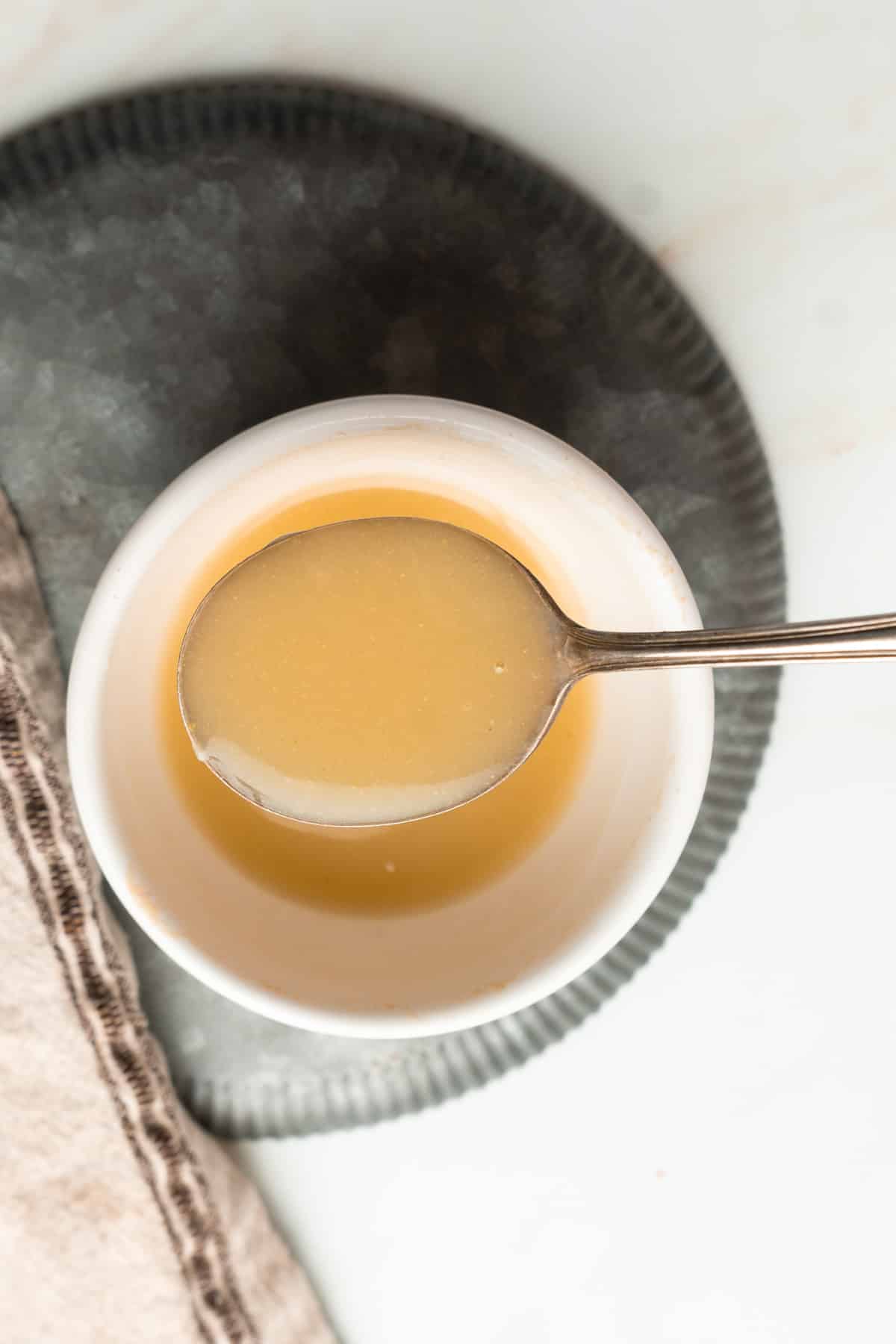
This post may include affiliate links. Please read my disclosure policy.
By substituting traditional wheat flour with gluten-free options, you can maintain the same velvety consistency and savory flavor that roux brings to a dish.
However, the type of flour or thickener you use and the method will vary based on the dish you are making. From classic gumbo to soups to rich bechamel sauce you can still make classic dishes suitable for a gluten-free diet.
Jump to:
What is a Roux?
Roux is a thickening agent for sauces that is equal parts fat and flour. Most often this takes the form of butter but can also be oil or bacon fat. A roux is used at the beginning of the cooking process.
It should not be confused with a beurre manie which is the same volume of flour and butter mixed together but it is not cooked and usually added at the end of a sauce's cooking rather than the beginning.
Why You Should Use This GF Roux
I have tested many different flours, thickeners, and tricks in an attempt to make the perfect gluten-free roux. But when it comes to roux, there is no universal answer.
But there are some very easy rules to follow to mimic a traditional roux that matches the dish you are preparing.
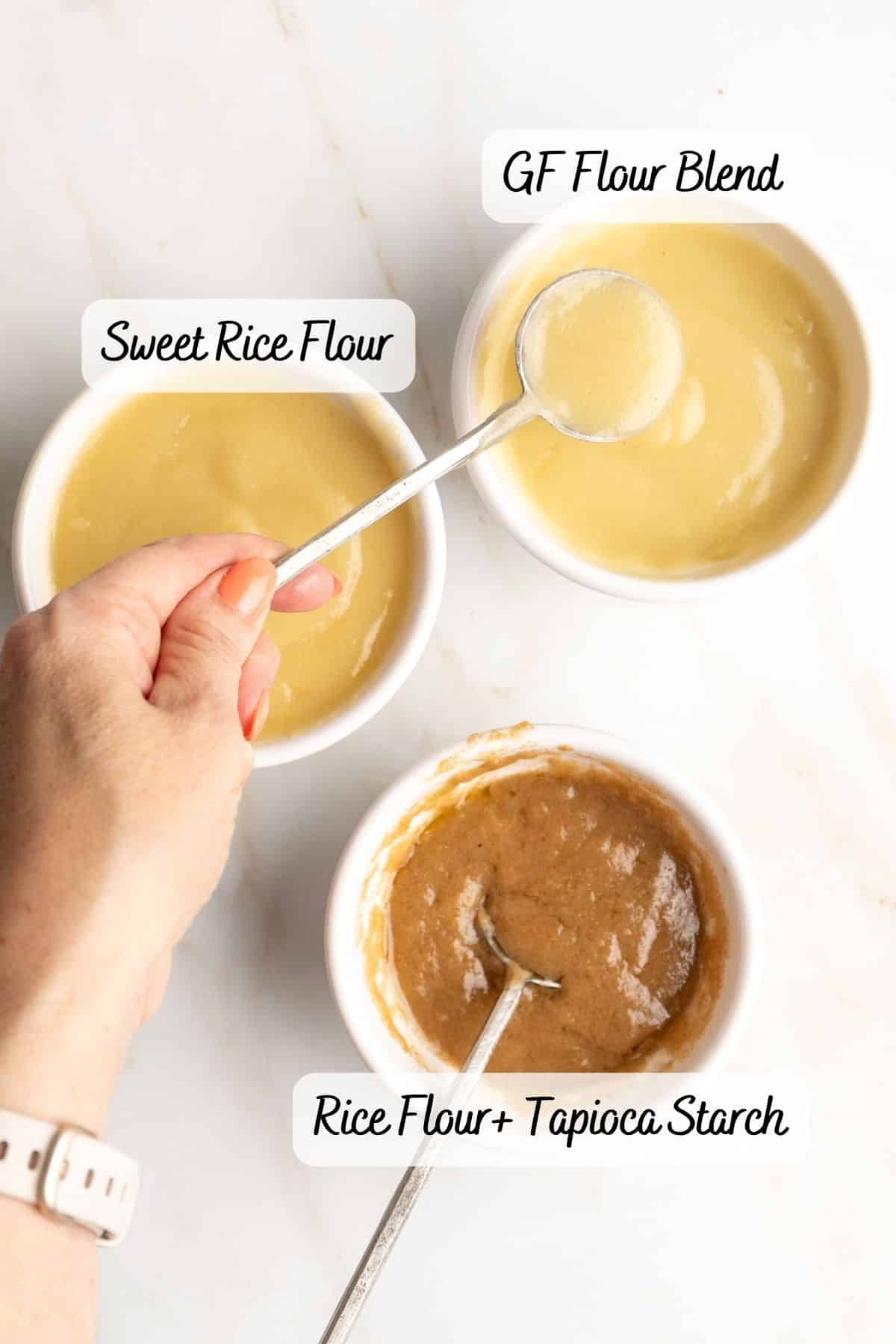
The Best Gluten-Free Flour for Roux
I tested multiple different single flours and flour blends. Many of which were not very successful.
Rice Flour - Do not use plain white rice or brown rice flour. In my testing, it always resulted in a grainy texture.
Rice Flour Plus Tapioca Starch - I have seen this blend mentioned but other blogs but in my testing it produced a dark thick and generally unappetizing texture. I do not recommend it.
Sweet Rice Flour - Also called glutinous rice flour, despite not actually containing gluten, this plain flour produced excellent results for a lighter color roux. But it did burn every time when testing a dark roux.
Gluten-Free Flour Blend - I tried several commercially available rice blends and all worked well for all types of roux.
I did not test any grain-free flour blends.
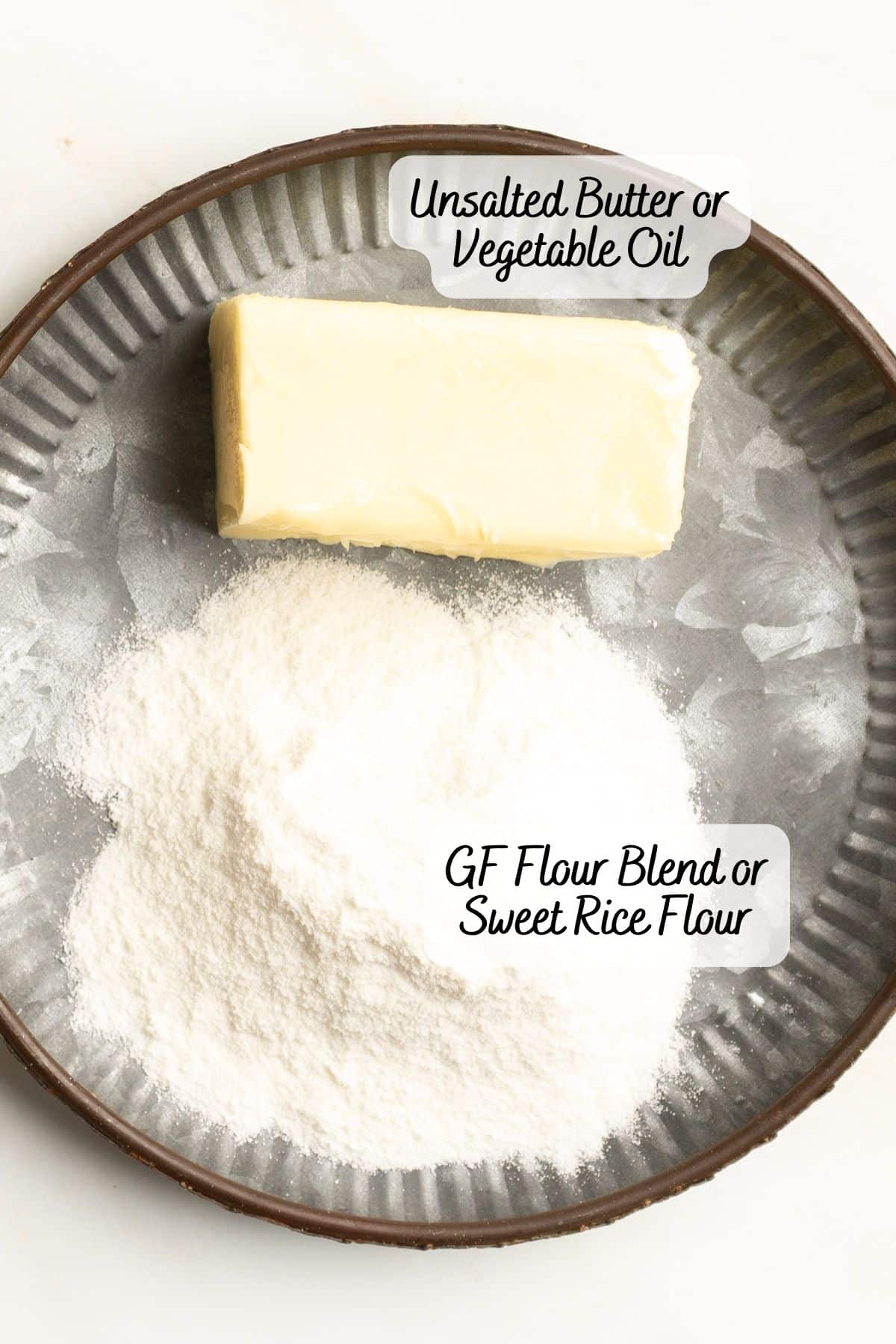
Dairy-Free Roux
To make your gluten-free roux dairy free opt for vegan butter or vegetable oil.
How to Make a Gluten-Free Roux
My recipe uses an equal amount of flour and fat, just like a traditional roux. But the fat I prefer to use varies on what type of roux I am making.
For a lighter roux, I use butter. But the butter/ GF flour combo tends to burn easily so I use vegetable oil to make dark roux.
To start heat your fat over medium low heat. Once warmed (or the butter melted) sprinkle over the flour.
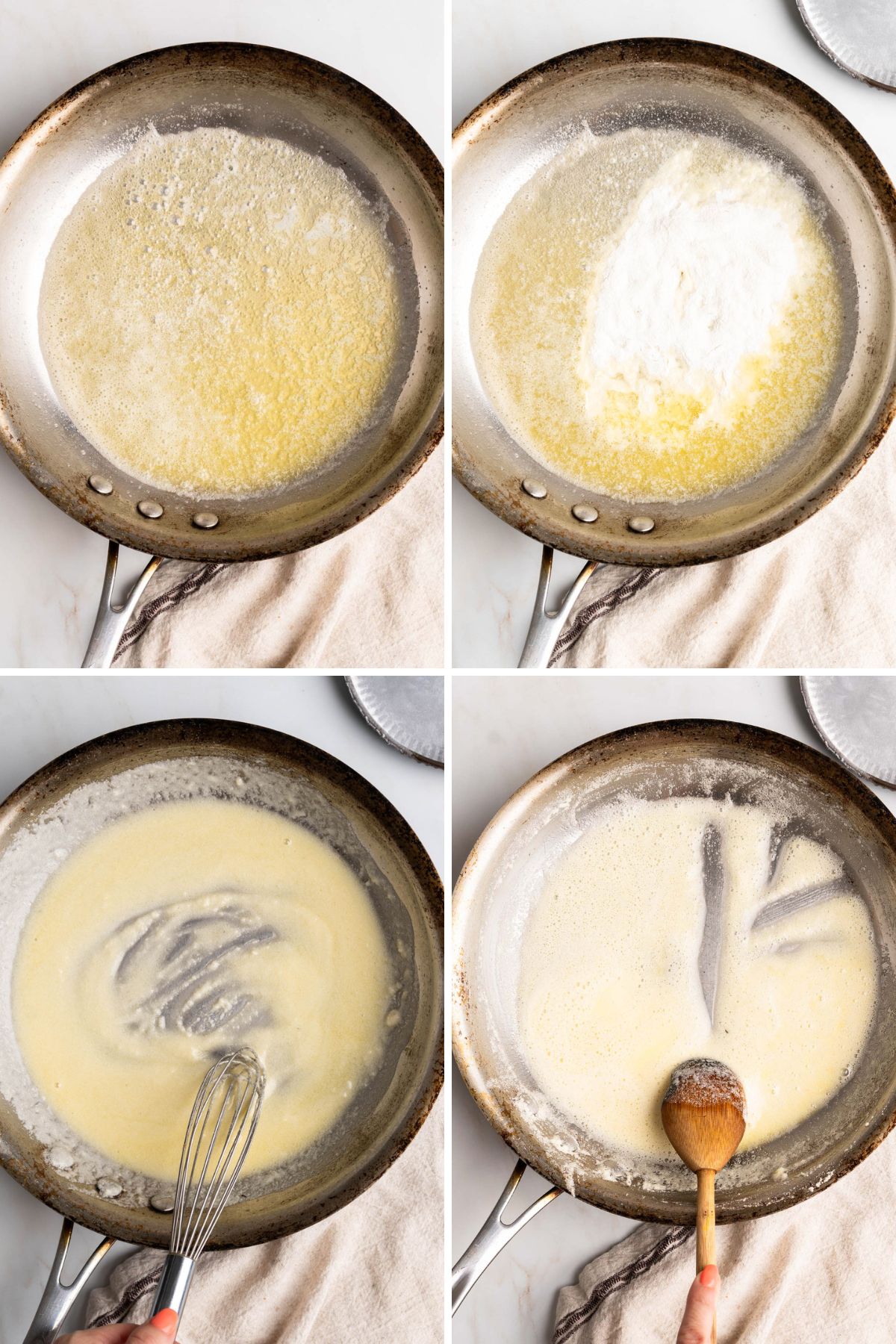
Spreading the flour out in the pan will result in less lumps. Immediately begin stirring. You can use a wooden spoon or whisk. But I prefer a whisk.
Moving in a figure 8 motion will ensure the flour is totally incorporated. Cook the roux for 4 to 5 minutes minimum.
How long you cook the roux will vary by recipe. What is important is that you stir frequently to keep the roux from burning.
Roux Stages
There are four types of roux. The stages relate to the color of the roux. As the roux cooks longer it actually loses its thickening properties. A white roux will create the thickened sauces and a dark roux, the thinnest.
White Roux- Is cooked just long enough to remove the raw flour taste but doesn't brown at all.
Blonde Roux- Cooked for 5-10 minutes, brown roux is the color of milk chocolate. It has a nutty flavor and is used for hearty soups and stews.
Light Brown Roux- Also called the peanut butter stage.
Dark Brown Roux- Cooked for at least 15-20 minutes, black roux is nearly burnt, with a bitter, smoky flavor.
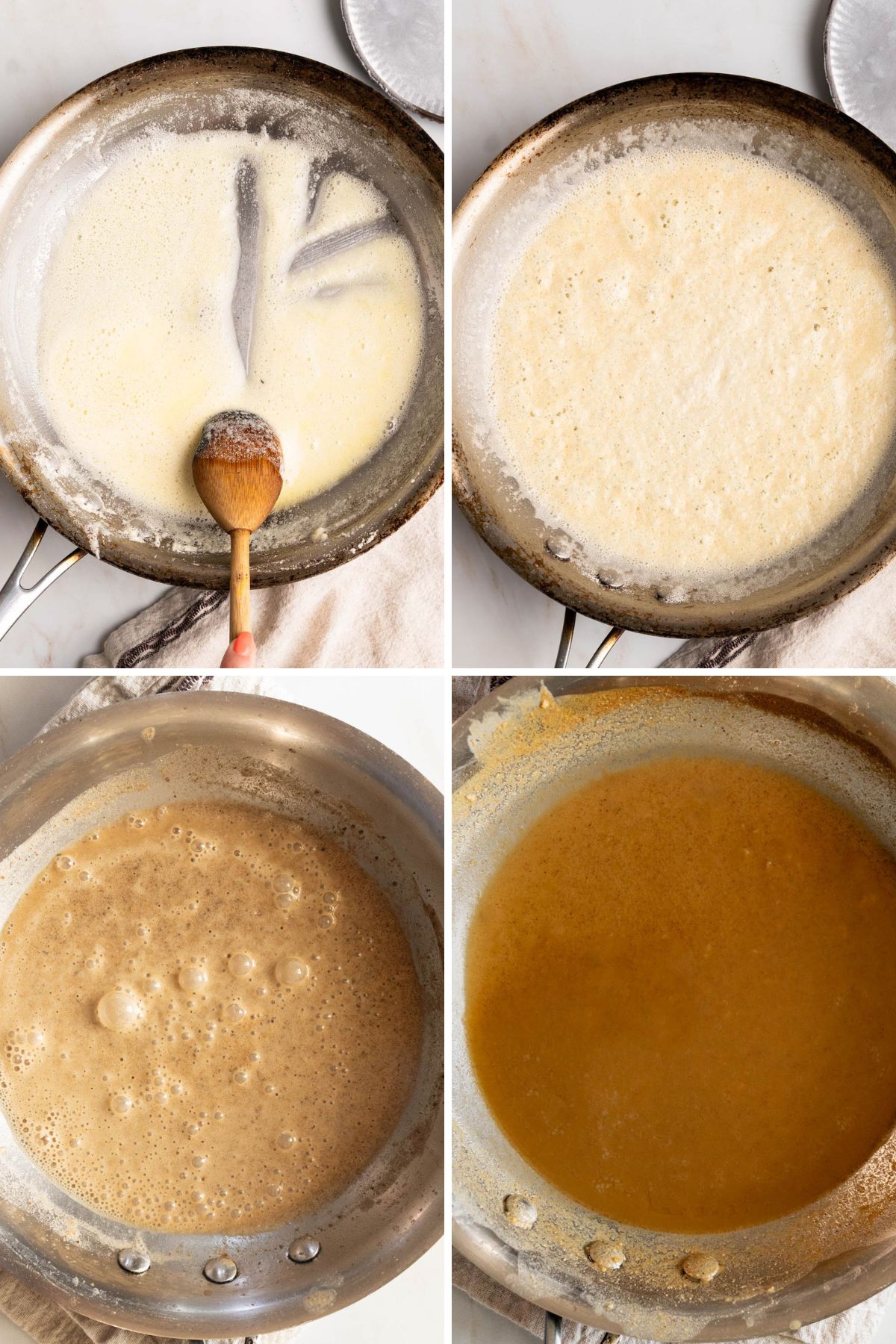
I don't recommend taking gluten-free roux past the "peanut butter" stage when using butter because at that point the starches begin to break down and will easily burn.
Because we are using starches, and not proteins (i.e. wheat) they tend to break down quickly.
Use oil not butter or try my brown butter method (below) to make a roux that is intensely colored with lovely flavor.
Expert Tip
Want to make an intensely flavored roux with strong thickening properties? Try the brown butter method. Brown your butter then add the flour. Cook for 3 to 4 minutes.
How to Use Roux
Roux is the thickening component for many classic sauces. White roux is used for white sauces that begin with a bechamel base (i.e. cream base) or a veloute (i.e. stock base). These types of sauces include a mornay sauce used to make mac and cheese, sausage gravy, or other creme sauces.
While a dark roux, or brown roux, is used for Espagnole the traditional base for brown sauces. You often see these in Cajun cooking like gumbo, But also in classic gravy recipes.
To achieve a rich dark roux, use the brown butter method.
More Gluten-Free Sauces
Is a Roux or Cornstarch Better for Making Gravy?
I recommend using a starch rather than a flour-based roux to make gluten-free gravy. You can use cornstarch, tapioca starch, potato starch or arrowroot starch to make a gluten-free slurry for thickening.
I use tapioca starch in my GF chicken pot pie and gluten-free gravy recipe because it has a neutral flavor and unobtrusive mouthfeel.
To use cornstarch you need to make a slurry which is the starch plus 4 times its volume of cold water. Mix together and allow the cornstarch to rehydrate for 3 to 5 minutes. Add to your gravy. Bring to a simmer, stirring constantly until it thickens.
Troubleshooting Homemade Roux
How do I fix a lumpy roux?
Lumps indicate that the roux was not stirred thoroughly. Remove the clumps by passing the mixture through a fine mesh sieve or using an immersion blender to blend the roux.
Why is my roux burnt?
If you heat the mixture too fast or neglect to stir it continuously, you will notice charred areas. It is advisable to begin again using a lower temperature and displaying more patience.
Did You Enjoy Making This Recipe? Please rate this recipe with ⭐⭐⭐⭐⭐ or leave a comment. It helps other wonderful people connect with my food.
📖 Recipe Card
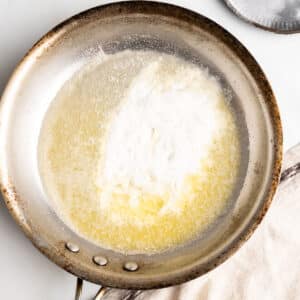
Gluten-Free Roux
Ingredients
Light Or Blond Roux
- ½ cup unsalted butter
- ½ cup gluten-free all-purpose flour or sweet rice flour
Dark Brown Roux
- ½ cup vegetable oil
- ½ cup gluten-free all-purpose flour
Instructions
Light Or Blond Roux
- Use this method for a sauce or gravy. Melt the butter in a skillet over medium-low heat. Add the flour and stir continuously with a wooden spoon in a figure-eight motion for 30 seconds to 1 minute until flour is fully combined with butter. The mixture should have no dry flour pockets.½ cup unsalted butter, ½ cup gluten-free all-purpose flour
- You now have a white roux ready for light sauces. For a blonde roux, keep stirring over medium-low heat for 3-4 more minutes until pale golden brown.
Peanut Butter or Dark Brown Roux
- This method is typically used for espagnole and gumbo. Heat the oil in a skillet over medium-low heat. Add the flour and stir continuously with a wooden spoon in a figure-eight motion for 30 seconds to 1 minute until flour is fully combined with butter. The mixture should have no dry flour pockets.½ cup vegetable oil, ½ cup gluten-free all-purpose flour
- For a dark chocolate roux, continue stirring and cooking the roux over medium-low heat for up to 30 minutes. The roux will gradually darken from light brown to copper, peanut butter brown, light chocolate
Notes
- You can use sweet rice flour for lighter roux but it will eventually burn. I only recommend using a GF flour blend. Your blend does not need to contain xanthan gum but it is fine if it does.
- To make a dark brown roux I recommend using oil rather than butter for the best results. The roux will not get as dark as traditional roux.
Equipment
- Wooden Spoon




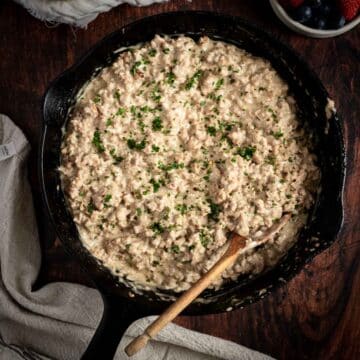
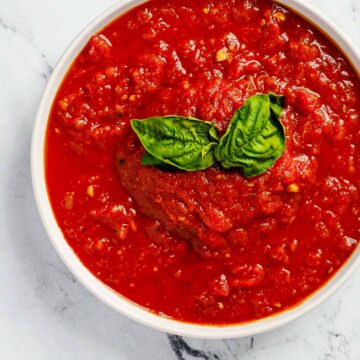
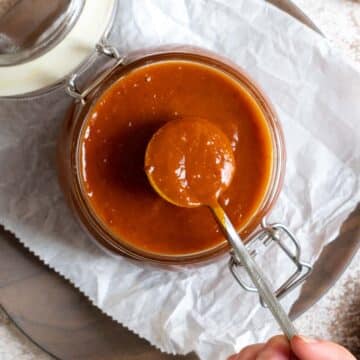
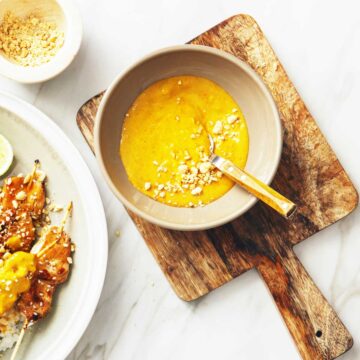
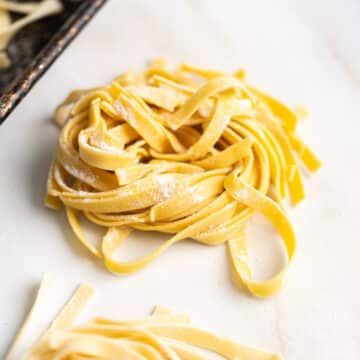
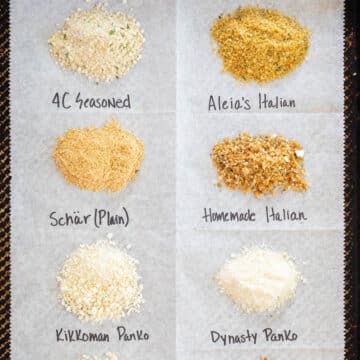
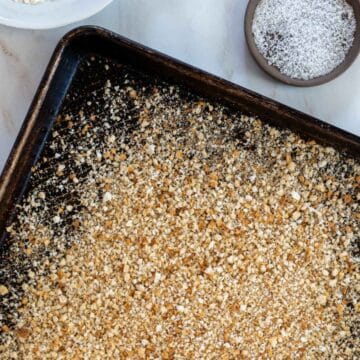
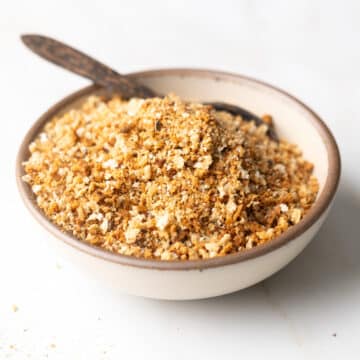
Saskia says
Hello, I was wondering how well the glutinous rice flour roux holds up to longer cooking times (e.g. recipes where the sauce is baked in the oven after making it)? I've tried a few gluten free flours in roux before, and all thicken up nicely initially, but after cooking the dish in the oven the starch loses its thickening power and I end up with a thin sauce!
Thanks.
Jen Wooster says
I generally don't take GF roux past the PB stage for this exact reason. My experience has been the same with baking.
If you are making a creamy dish I actually skip the roux and add 2-3 tablespoons cream cheese. It thickens up so nicely. Otherwise I prefer to use tapioca or potato starch in place of the roux to thicken the sauce if I am then going to bake the dish.
Saskia says
Hmm, that's interesting that you've found tapioca alone works, as I've had the opposite experience! I've tried using it in sauces for things I'm going to cook in the oven, and found it also ended up losing it's thickening power.
Unfortunately cream cheese isn't an option for me as I'm lactose intolerant (I can do mature cheeses, but not unaged cheese like cream cheese). The only solution I've found so far is to take a completely different approach, using vegetables to thicken the sauce instead - squash works pretty well. The only downside is that cooking and pureeing the veg adds an extra, time consuming step to the recipe, and can change the flavour slightly. Of course the upside is that it adds extra nutrients, and stays thick!
Jen Wooster says
Yes- I use potatoes in my dairy-free soup recipes. When you add tapioca starch you add it at the end.